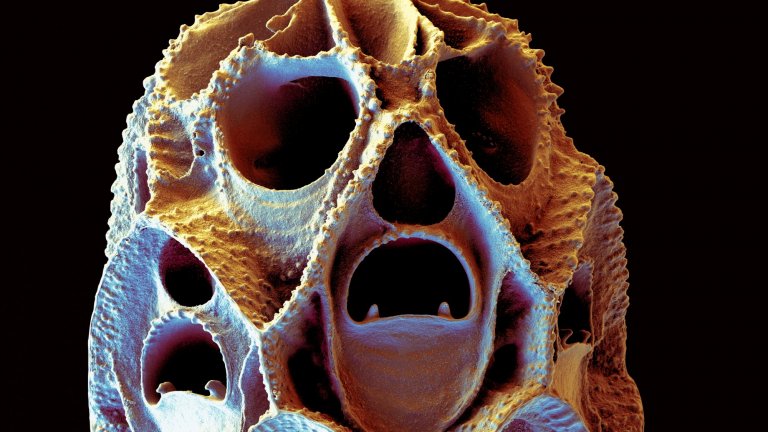
© Stephan Borensztajn / Caroline Thaler / IPGP / CNRS Images
View the mediaScientific news
One of the 20 winners of the “Proof in Images” 2021 competition, organised by CNRS in partnership with Acfas, its Canadian partner in Quebec, was chosen by the public who were able to vote until 31 October... Three others shared the two Jury prizes.

© Stephan Borensztajn / Caroline Thaler / IPGP / CNRS Images
View the mediaThe public chose “The Scream” by Stephan Borensztajn and Caroline Thaler. This surprising structure is the random result of the incremental growth of a colony of bryozoans of the species Cellaria fistulosa, which are sub-millimetric reef builders. Each organism lives in a sort of calcium carbonate box with openings, with the main one enabling the animal to filter sea water and feed. These small organisms, which live in colonies at all latitudes, play a major role in climate regulation by storing CO2 dissolved in sea water in their mineral skeleton. Researchers are trying to better understand bryozoans’ resistance to environmental stresses in a context of ocean acidification.
The Grand Jury's Prize was awarded to Bertrand Rebière and Bruno Alonso for their “A Zeolite's Dream on a Summer Night”, a rather pleasing arrangement of zeolite crystals on carbon tape examined with a scanning electronic microscope (SEM) which produces 3D images. Zeolites, which are like tiny, hard, dense sponges, are extremely porous and have unique properties: a single gramme of zeolite consists of billions of pores and cavities close to a nanometre in size, with an internal surface area of up to... 900 m2! The goal is to explore and characterise the internal structure of these crystals at nanometre-scale to better understand and assess their physico-chemical properties. Zeolites are able to absorb and filter chemical compounds, and are also used in the manufacture of more efficient and green catalysts.
The Jury’s “Coup de Coeur Prize” was awarded to two images that tied:
Discover the 20 winners in pictures.
Our work is guided by the way scientists question the world around them and we translate their research into images to help people to understand the world better and to awaken their curiosity and wonderment.